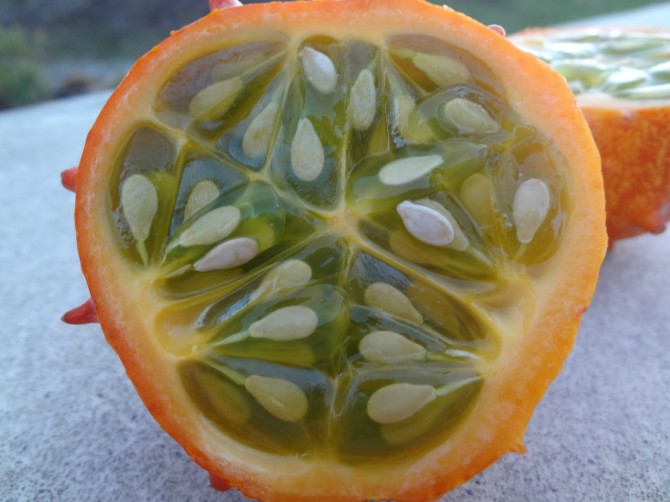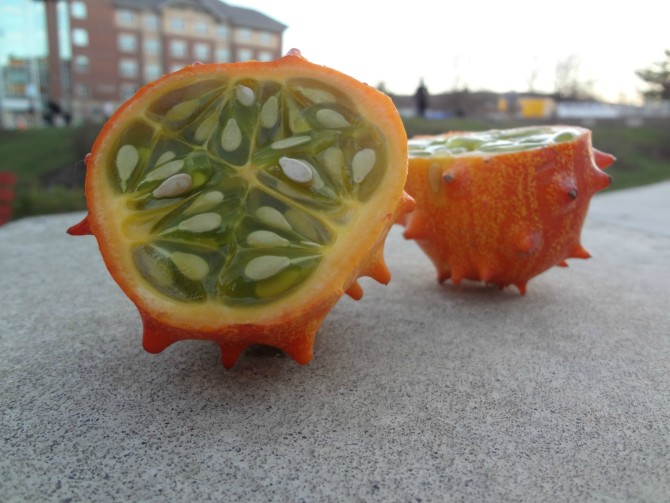On a recent grocery-shopping trip, a funky fruit called the African Kiwano Melon or the “horned melon,” caught my eye. Naturally I thought, “I have to try this,” and boldly spent $6 on a melon (yes, $6 on one fruit…I had high hopes).
This bright yellow-orange melon has origins in Kalahari, Africa but is mainly cultivated in New Zealand and available during the spring and summer seasons. When the fruit is ripe, the exterior will be more orange than yellow.
With sharp spikes protruding from its colorful skin, the Kiwano melon is not only nutritious, but it can also be used for purposes other than eating. Similar to most fruit-usually the plastic kind-Kiwano melons can be used for your home or dorm aesthetic. That’s right, you can decorate your desk with a bowl of Kiwano melons and look cultured as hell.

Photo by Willa Sieradski
While the outside is a tie-dye color, the inside is a lime green, as shown above. The transparent green has a jelly-like texture, surrounding the seeds.
A spoonful of the jelly-seed combo blends the flavors of tart cucumber, fresh banana and a taste of kiwi. Refreshing but overall quite a sour fruit.

Photo by Willa Sieradski
The Facts:
- 1-cup serving has about 4 grams of protein (equivalent to a tablespoon of peanut butter) (source)
- 287 milligrams of potassium (about half the amount in a banana) (source)
- Vitamins A and C (source)
- About 92 calories (source)
- Improves malnutrition in Africa, as well as other parts of the developing world (source)

Photo by Ellie Bernstein
How to eat it:
First, carefully wash the fruit. Emphasis on “carefully,” this thing can really scratch. On that note, I wouldn’t play catch with it either.
Next, cut the fruit either horizontally or vertically.
Now you can scoop out the seeds and lime green gel. Placing it in a bowl, stir until the gel liquefies.
It is best paired with a teaspoon of sugar or any kind of sweetener, as it enhances the banana and cucumber flavor and lessens the sour component of the fruit.
Other foods that the Kiwano melon pairs well with are yogurts, ice creams and fruit smoothies.


